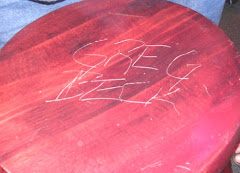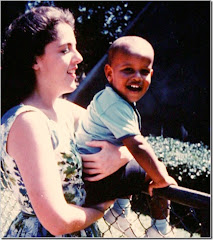How Many Dark Ages Were There?
Lost Civilization May Have Existed Beneath the Persian Gulf
The Dark Age we all learned about in school was the period that immediately followed The Fall of Rome.
For 6000 years of recorded human civilization, mankind has grown from a common core and spread a cultural legacy. Sumerians, Persians, Greeks, Egyptians, Romans had all grown strong, conquered, expanded, enslaved and spread a more or less common spiritual and cultural inheritance.
The first Big Change to this dynamic was the birth and spread of Christianity in the 1st Century of the Common Era.
The second Big Change was the Fall of Rome.
When the "barbaric" Germanic tribes sacked Rome and brought down the Roman Empire, there was nothing to fill the vacuum. These were the Dark Ages we learned about in school. When civilization as we had known it for thousands of years was absent and much knowledge and wisdom was lost.
It wasn't until the next Big Change, the Islamic expansion several hundred years after the Fall of Rome brought translations of ancient wisdom and the Muslim's own discoveries in mathematics and astronomy that the dregs of Europe were re civilized.
1,2,3,4,5. Know what those are called? Arabic numerals. They're what we use today.
Know what we don't use? I, II, III, IV, V. Those are Roman numerals.
My point is, the Dark Ages that resulted from the fall of a major civilization just 1500 years ago, only lasted a couple of hundred years, but had a profound impact on our modern society.
Now we learn that "Veiled beneath the Persian Gulf, a once-fertile landmass may have supported some of the earliest humans outside Africa some 75,000 to 100,000 years ago, a new review of research suggests.
At its peak, the floodplain now below the Gulf would have been about the size of Great Britain, and then shrank as water began to flood the area. Then, about 8,000 years ago, the land would have been swallowed up by the Indian Ocean, the review scientist said."
"The study, which is detailed in the December issue of the journal Current Anthropology, has broad implications for aspects of human history."
"The Gulf Oasis would have been a shallow inland basin exposed from about 75,000 years ago until 8,000 years ago, forming the southern tip of the Fertile Crescent, according to historical sea-level records.
And it would have been an ideal refuge from the harsh deserts surrounding it, with fresh water supplied by the Tigris, Euphrates, Karun and Wadi Baton Rivers, as well as by upwelling springs, Rose said. And during the last ice age when conditions were at their driest, this basin would've been at its largest.
In fact, in recent years, archaeologists have turned up evidence of a wave of human settlements along the shores of the Gulf dating to about 7,500 years ago.
"Where before there had been but a handful of scattered hunting camps, suddenly, over 60 new archaeological sites appear virtually overnight," Rose said. "These settlements boast well-built, permanent stone houses, long-distance trade networks, elaborately decorated pottery, domesticated animals, and even evidence for one of the oldest boats in the world."
Rather than quickly evolving settlements, Rose thinks precursor populations did exist but have remained hidden beneath the Gulf. [History's Most Overlooked Mysteries]
"Perhaps it is no coincidence that the founding of such remarkably well developed communities along the shoreline corresponds with the flooding of the Persian Gulf basin around 8,000 years ago," Rose said. "These new colonists may have come from the heart of the Gulf, displaced by rising water levels that plunged the once fertile landscape beneath the waters of the Indian Ocean.""The most definitive evidence of these human camps in the Gulf comes from a new archaeological site called Jebel Faya 1 within the Gulf basin that was discovered four years ago. There, Hans-Peter Uerpmann of the University of Tubingen in Germany found three different Paleolithic settlements occurring from about 125,000 to 25,000 years ago. That and other archaeological sites, Rose said, indicate "that early human groups were living around the Gulf basin throughout the Late Pleistocene."
We have clear evidence how far human knowledge was set back by one Great Civilization collapsing for a few hundred years before another Great Civilization came to the rescue with rediscovered wisdom.
Think about how much knowledge has been lost and what a small fragment of it has been rediscovered if human civilization dates back not a mere 6,000 years, but 75,000 years or 125,000 years.
All of a sudden the Mystery of the Pyramids isn't how Ancient Egyptians 4,000 years ago managed to build such magnificent structures (without the unlikely intervention of alien technology), but what fragments of even more ancient human technology the Egyptians, Incas, Mayans, Aztecs, Toltec's and Polynesians had access to that allowed them to accomplish their myriad wonders.
There are perfectly rational answers to all of the mysteries of the universe. Science will give us those answers.






























4 comments:
There you go, you and your *evidence* again. When will you finally see the light?
Interesting article and post. I've looked down at Roman ruins buried beneath the current city of Cologne, Germany. A million thoughts go through your mind looking at something like that. Findings so ancient as in your article must be absolutely awesome to discover.
Just because 1, 2, 3, 4, 5, etc. are called "Arabic Numerals", it doe's not make them of Islamic or Muslim like you seem to imply.
The Arabic numeral system is from India. They are also referred to as "Hindu-Arabic Numerals". It did not originate with the Muslims or Islam.
Anonymous - I don't normally respond to anonymous comments but I'll make an exception by asking a question.
How do you suppose those "Hindu-Arabic" numerals made their way (along with translated works of Greek and Roman philosophy, science and literature and original works on astronomy) to the Dark Age proto-Europeans who built their houses using bricks made from their own sewage?
T'was the Moors (read Islamic invaders) who rescued and educated the barbaric remnants of the Roman Empire.
The Muslims preserved and spread ancient Western Civilization back in to what used to be Western Civilization.
The Renaissance, the re-birth of Western Civilization after the Fall of Rome would never have happened without the re-seeding of ancient Greco-Roman wisdom by the Muslims who preserved it and disseminated it among the barbaric European hordes they conquered.
There are many historic examples where the Muslims were far more civilized and generous than their Christian counterparts.
Post a Comment